#gnawa
Text

35 notes
·
View notes
Text

12 notes
·
View notes
Text
me? obssessed with gnawa?
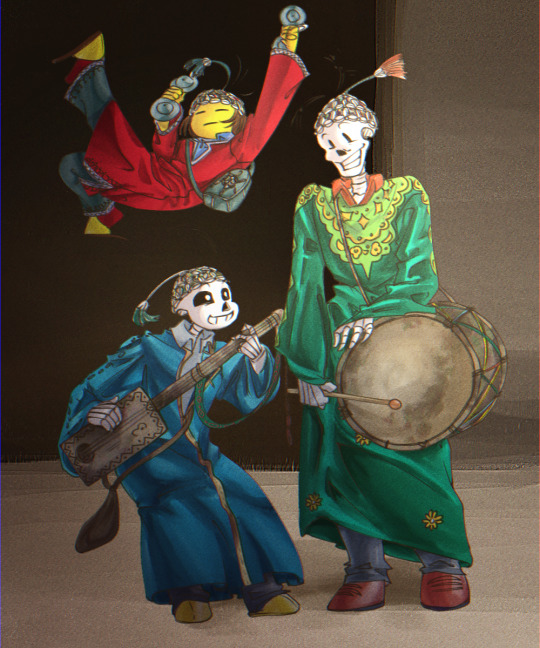
yes, yes I am b**ch
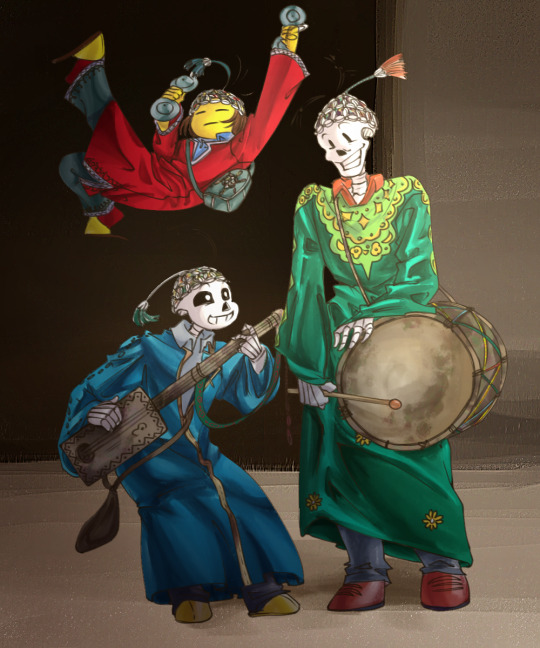
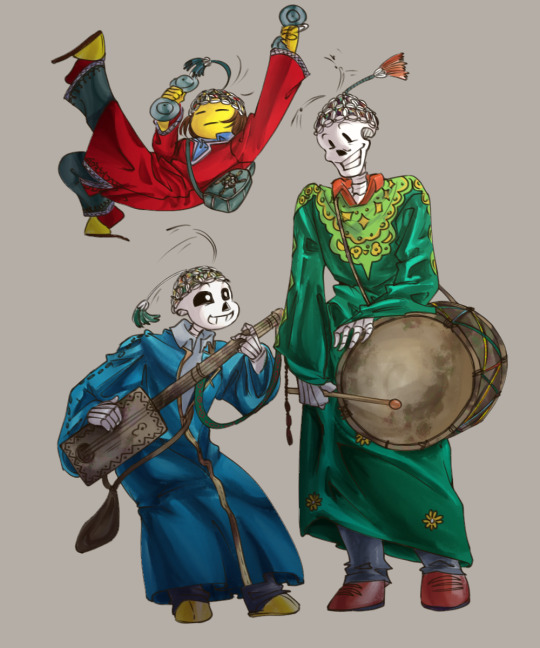
the sillies
#undertale#sans#frisk#papyrus#art#gnawa#gnawa music#moroccan stuff#north africa#Bc we love mother africa
100 notes
·
View notes
Text
Christer Bothén Featuring Bolon Bata - Trancedance (40th anniversary edition)
Black Truffle is pleased to announce the first vinyl reissue of Trancedance, a wild slice of Swedish Afro-fusion from Christer Bothén, originally released in 1984. A major figure in Swedish jazz and improvised music since the 1970s, often heard on bass clarinet and tenor sax, Bothen studied doso n’koni (the large six-stringed ‘hunter’s harp’ of the Wasulu) in Mali in 1971-2 before turning to the guinbri (the three-stringed lute of the Gnawa/Gnauoua) in Marakesh later in the decade. In between, he performed extensively with Don Cherry during his Organic Music Society period and taught Cherry the doso n’koni. In the later 70s and 80s he worked with the most important figures in the distinctive Swedish jazz-rock-world fusion scene, joining Archimedes Badkar for their African-influenced Tre and participating in Bengt Berger’s legendary Bitter Funeral Beer Band.
Many of the musicians who played on the Bitter Funeral Beer Band’s ECM LP (including Berger on drums, Anita Livstrand on voice and percussion and Tord Bengstsson on piano, violin and guitar) joined Bothén for one of the sessions that produced Trancedance, the first release under his own name, dedicated to his compositions. The other session introduced his seven-piece group Bolon Bata, heard on the second track of each side.
A must for fans of the Swedish scene around groups like Arbete och Fritid and Archimedes Badkar, as well as any listener who has been seduced by Louis Moholo’s Spirits Rejoice!, The Brotherhood of Breath, or, more recently, the guinbri grooves of Natural Information Society, Trancedance is a lost classic ripe for rediscovery.
#Christer Bothén#Bolon Bata#jazz#sweden#gnawa#reissue#black truffle#1984#2024#80s#bitter funeral beer band#Bandcamp
11 notes
·
View notes
Text
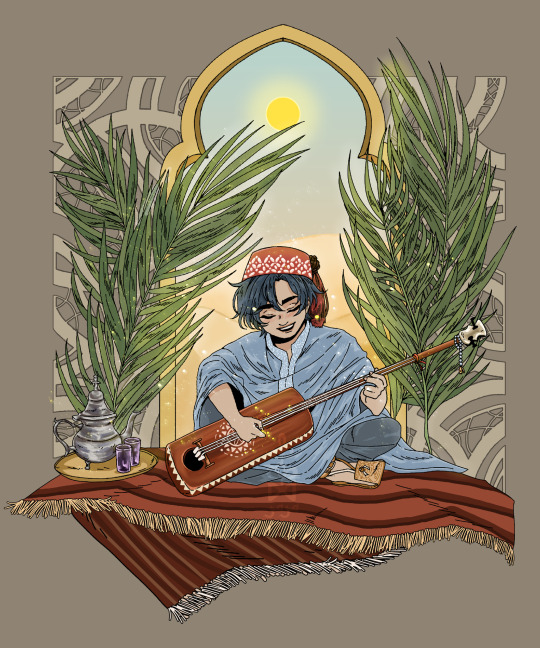
Guembri player ✨
#representation of Algerian heritage thru my illustration is an obsession for me#Algeria is my country and I have to show its beauties to the world#artists on tumblr#digital art#artwork#female artists#illustration#character design#sketch#ocs#oc artwork#original character#algeria#Sahara#north africa#gnawa
32 notes
·
View notes
Text
drawing myself naked, listening to gnawa, freshly showered, living this year’s July
4 notes
·
View notes
Text
Artist Profiles: Hasna El Becharia
Angel Romero
June 10, 2016

Hasna el Becharia
Hasna el Becharia is a female Gnawa multi-instrumentalist. She was born in 1951 in Béchar (formerly known as Colomb-Béchar, a garrison town during the time of the French colonization). This town in southwestern Algeria is a fertile musical ground, with styles such as Diwan, Foundou and the popular Haddawi repertoire to celebrate Arab-Berber weddings of this sub-region.
The daughter and grand-daughter of Gnawa musicians, she plays popular Saharan traditional songs and personal compositions. In 1972, she began to play by herself. With three friends of hers, including Zorah and Kheira who are still singing by her side, singing and playing drums and tambourines. Hasna played traditional desert tunes on the acoustic guitar. They became successful very quickly, playing at weddings, banquets, etc. Everybody wanted to hear Hasna and her pals. During their performance, people sang along all the songs. It was so noisy that Hasna began to play the electric guitar to be heard. At that moment, she became really famous. Beyond the little town of Bechar, her name was known all over the south of Algeria. Algerian producers tried to make her record some tunes on a tape recorder, but she refused because she didn’t trust them.
In less than 4 years, Hasna and her band built their own legend. In 1976, they were the guest stars of a great concert in Bechar, organized by the Union of Algerian Women, in front of a female audience.
She arrived in France in January 1999 when she was invited to a festival called “Women of Algeria. She was one of the two new-comers who emerged from this festival. Fascinated by her music, the organizers of the festival decided to put her on stage every night, although it was originally planned that she would only play one evening. Quickly, rumors spread throughout Paris about this incredible female guitar player from the desert. Journalists and producers showed up and the prestigious French newspaper Libération published an article about her.
Hasna decided to stay in Paris because her situation was too difficult in Algeria. In spite of singing about the Prophet, she did not conform with tradition. She is too free and does not accept the old fashioned patriarchal customs that still rule in her country.
The guimbri and karkabas (two instruments masterfully played by Hasna) are the pillars of North African black music. Hasna creates a powerful and rough guimbri sound and she has an astonishing sense of rhythm.
Like numerous Algerian Gnawa musicians, Hasna takes her roots in the popular wedding repertoire. In addition to guimbri and karkabas, she plays electric guitar, ud, darbuka, bendir and even banjo. At the age of 51, Hasna recorded her first album. She composed the majority of her songs in France. By no means corrupted by stage or studio performance, she took advantage of these new experiences to explore the sound of guitars, vocal timbres on different tonalities, to improvise and make new encounters. In order to make her recording, the producers brought together great musicians from Algeria, Morocco, Tunisia and Niger.
6 notes
·
View notes
Text
youtube
youtube
Jacob Collier - Box of Stars Pts. 1 & 2
#Jacob Collier#music for your earholes#hip hop#rap#orchestra#kirk franklin#chika#d smoke#sho madjozi#yelle#kanyi mavi#steve vai#metropole orkest#voces8#suzie collier#the aeolians of oakwood university#djesse#brazil#cuba#guinea#punjab#morocco#egypt#peru#month of Djesse#gnawa#Youtube
4 notes
·
View notes
Text

Marrakech, photo by Leila Alaoui
32 notes
·
View notes
Text
a curated playlist of African hits from the 1970s to the early 2000s. journey through genres like jazz, zouk, highlife, shambo, zilin, gnawa, mbaqanga, jive, and many more. let the melodies transport you to the soul of Africa's rich musical heritage.
enjoy!
+ share
20 notes
·
View notes
Text
Listen to music that has a spiritual origin to its existence, lots of examples embedded in the above article.
6 notes
·
View notes
Text

28 notes
·
View notes
Text
Tel Aviv bassist, band leader, composer and producer Shay Hazan expands his sonic palette on his new album ‘Wusul وصول’. Uplifting, groovy and expressive, Hazan’s hypnotic aural creations beautifully weave together the magical tones of Gnawa music, the soulful rhythms of spiritual jazz, and the energy of hip-hop grooves, not to mention a sprinkle of electronic production.
2 notes
·
View notes
Text
Peter Brötzmann - Majid Bekkas - Hamid Drake - Catching Ghosts - Brötzmann on ACT?! A 2022 live set released shortly before his death
The 2022 Jazzfest Berlin performance by revered, iconoclastic reedist Peter Brötzmann, Moroccan Gnaoua adept Majid Bekkas playing the two-stringed, camelskin-backed guembre, and Chicago-bred drummer Hamid Drake, documented as Catching Ghosts, is historic.
6 notes
·
View notes
Text
59: Nass El Ghiwane // Nass El Ghiwane

Nass El Ghiwane
Nass El Ghiwane
1976, Plein Soleil
The job of a label press release is to pique interest in a record, and when you’re in the ~*world music*~ reissue business that usually means trying to find a parallel between your artist and a familiar touchstone, angling for the off chance an openminded shopper will take a shot and throw your record into the day’s stack. This is the ship that launched a thousand “the [western artist] of [non-western country]” blurbs (“The Hendrix of Turkey!” “The Joni Mitchell of Zambia!” “The Mort Garson of Brunei!” etc.). It worked on me when a somewhat younger, much callower version of myself snagged Nass El Ghiwane (1976) from a shop that’d taped an excerpt of the press release to the sleeve. Here it is in full:
“Formed in 1971, Nass El Ghiwane's five members first performed in the avant-garde of Morocco's underground theater scene. Following their debut performance as a band in Rabat at Tayeb Seddiki's Mohammed V Theatre, their songs became the 1970s anthems of Moroccan youth -- nationalist, rebellious, experimental, and bygone all at once. They are Morocco's most enduring musical legacy. They modernized the way music was transmitted to the disenchanted and rebellious youth of their country. Their concerts would turn into riots as their music and lyrics incited deep affection from their virulent fan base. Their music echoes medieval Moroccan oral traditions; coming from the Gnawa trance music of their ancestors, they sang tales of Sufi mystics and wrote lyrics that criticized the conservative monarchy of Mohammed V. They were the first to introduce the banjo, guembri, and colloquial Moroccan Arabic in their version of the shaabi genre. Nass El Ghiwane were a huge influence on Algeria's modern Raï movement, as Cheb Khaled started his career covering Nass El Ghiwane's songs. This is exemplary trance music and the foundation of the modern era in Moroccan music. Martin Scorsese has called them "‘The Rolling Stones of Morocco.’" It could be argued that Scorsese's claim would be more accurate if the Stones were fronted by Bob Dylan. This is the first ever vinyl reissue of their third album from 1976, one of the most desired LPs in their legendary discography. Fully remastered sound.”
It's a near platonic ideal of its kind—rife with dope-sounding references (Gnawa trance music! Sufi mystics! Concerts breaking out into riots!), and intriguing bold-type names.* I might have had no idea who Cheb Khaled was, but the wording insinuated I should and would like to, and the references to the Stones and Dylan suggested I was holding some kind of wicked fusion of Arabic folk music and heavy rock. Which anyone who knows anything about Gnawa trance music, or shaabi, or Raï, probably could’ve told me it wasn’t, but none of those people were in Sonic Boom Records at that time, so they didn’t, and I ended up with a record I really didn’t know what to make of for quite a while.
To paraphrase writer Ralph Wiley’s rejoinder to Saul Bellow’s (allegedly) dismissive question, “Who is the Tolstoy of the Zulus?”, the Rolling Stones are the Rolling Stones of Morocco, and Dylan is the Dylan of Morocco. Nass El Ghiwane are similar to these acts in the sense that they were famous and countercultural in their own society, but what that meant in a Moroccan context, and in musical terms, is very different. “Nass El Ghiwane isn’t a pop group in the classical sense, but more of a theatre group that sings,” noted Tayeb Seddiki, a theater director who helped launch their career. He continues:
“They’re sort of troubadours. In the Atlas Mountains, we have three or four poets who travel from souk to souk, from village to village, singing stories from a political, economic or sociological viewpoint that deeply interests people. […] Nass El Ghiwane were the first, and they still are. Moroccans recognize themselves in the group. They see their problems reflected in their songs, their daily lives and all their issues.”
This is something close to a working definition of the appeal of any ethnic or national folk music, music that seems to concentrate the experience of living within one’s culture into song. Like many American and British folk revival artists of the ‘50s and ‘60s, Nass El Ghiwane began by performing and reinterpreting traditional songs. In their case, this was romantic poetry that had been preserved through oral traditions going back generations. Once thoroughly steeped in the scales and structures of these familiar songs, they began to also create original material that felt to Moroccans like an organic outgrowth of their proud musical lineage.
youtube
Though I eventually grew to appreciate the insistent rhythms and passionate group vocals of the LP I’d purchased, it wasn’t until I watched the 1981 documentary/concert film Trances (الحال) by director Ahmed El Maânouni that I got a better handle on what made Nass El Ghiwane such a profound experience to their fans. (I highly recommend this 88-minute film, which Criterion re-released in the 2000s. I was able to easily find a high quality rip on the Internet Archive, and this YouTube version is decent.) Nass El Ghiwane’s performances alternated between dramatic spoken word monologues and incantatory rave ups which left audiences in exhausted, cleansed heaps. The film makes explicit the connections between the ecstatic healing rituals of the Gnawa and the wild dancing of the band’s young fans:
Here, at last,
comes the time of ecstasy, of trances
Those who refuse to their senses
the gift of trances
shall wither



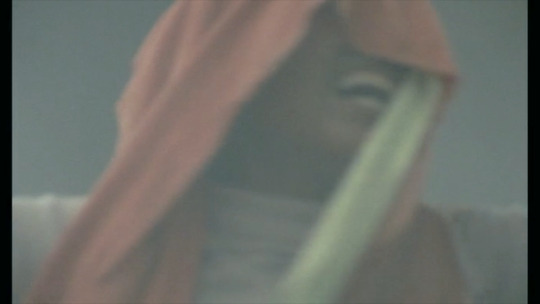

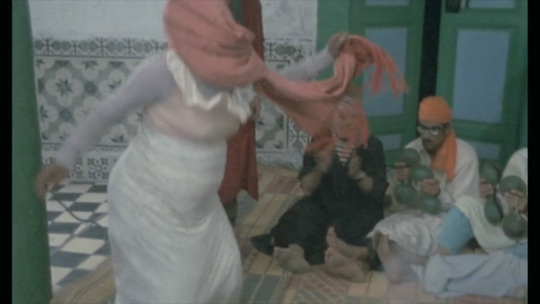

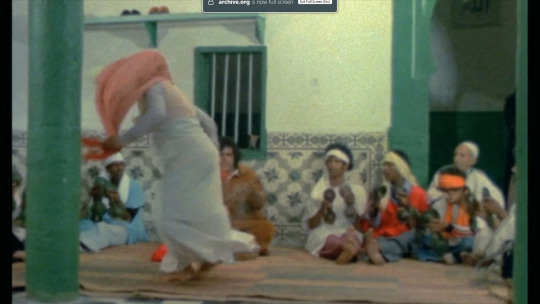


Trances also gives welcome insight into each member’s personality and role in the band. There is virtuosic banjo player Allal Yaâla, a quiet Black Moroccan with a mastery of Arabic, Berber, and occidental scales who taught the others much of their original repertoire. Tabla drummer and frequent lead singer Larbi Batma was their soul, a lanky, intense poet whose seriousness was offset by the sly humour of bendir (handheld frame drum) player Omar Sayed, the strongest actor of the troupe and perhaps its most gifted singer. The longest-running version of the band was rounded out by Abderrahmane "Paco" Kirouche on sintir (a sort of bass lute) and daadoua (a shoulder-held goblet drum), a robust man who’d been a woodcarver before finding musical success.
Nass El Ghiwane is an LP I appreciate more as I discover more of its context, knowing not only who these men are but how their talents fit together; some notion of where their music came from, and how audiences of their time received it. It benefits from being played as loudly as you’re comfortable with and being listened to in a meditative frame of mind. Nass El Ghiwane were “the Nass El Ghiwane of Morocco” just as they are the Nass El Ghiwane of Canada, Cambodia, and Fiji—but if a Scorsese quote comparing them to the Stones is what got me listening to them, I reckon that’s fair enough.
59/365
* Also, bless the Plein Soleil press release writers for bolding Mohammed V’s name, in case there were any real Alawi-dynasty heads out there in record-land. Worth noting they got the wrong king though, as it was actually Mohammed V’s son Hassan II who was in power during NEG’s heyday!
#nass el ghiwane#gnawa#trance#moroccan music#Ahmed El Maânouni#rai#music review#vinyl record#martin scorcese#'70s music#north africa
8 notes
·
View notes
Video
youtube
10 notes
·
View notes